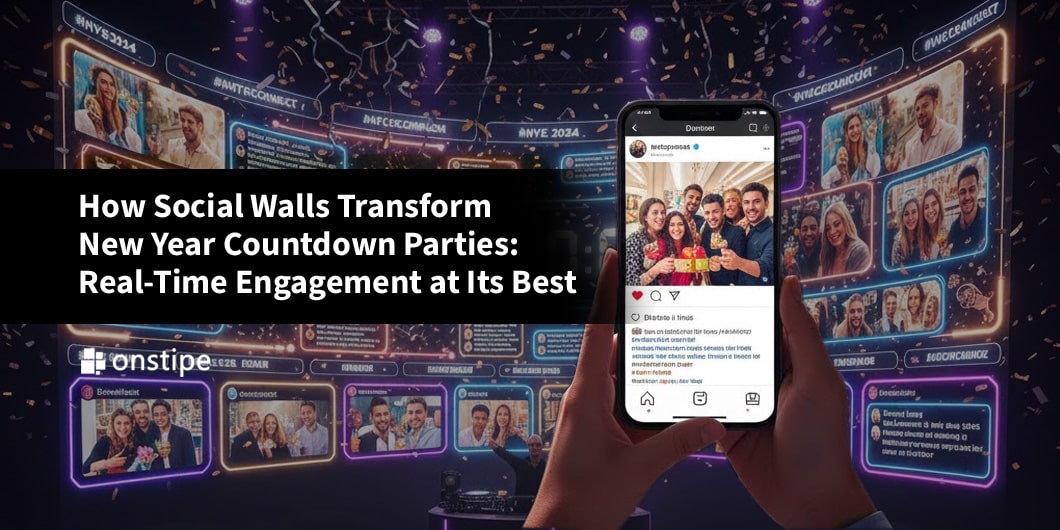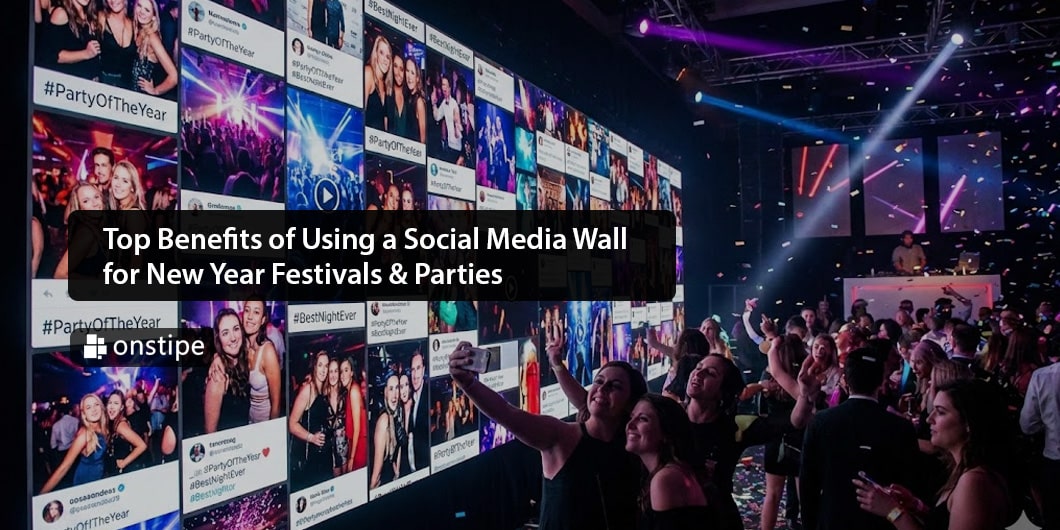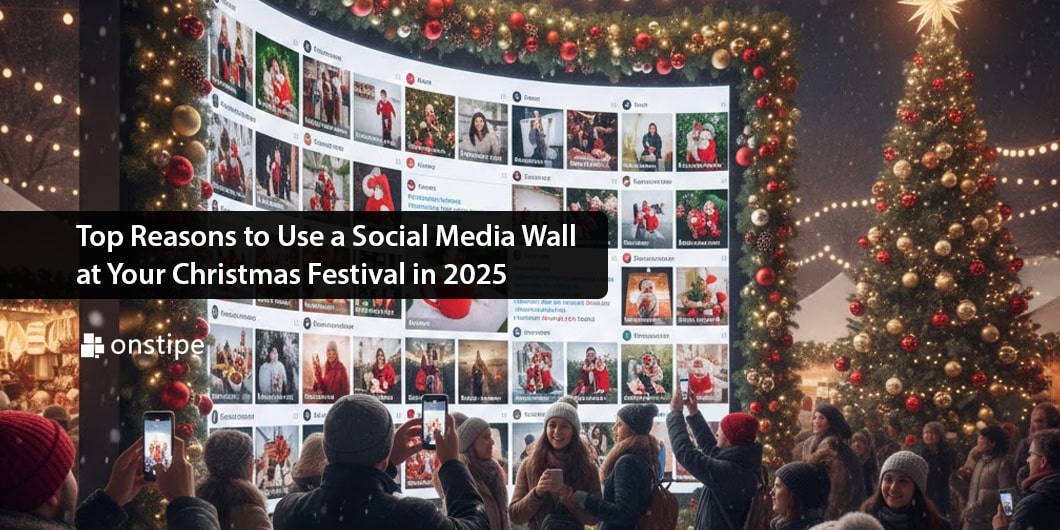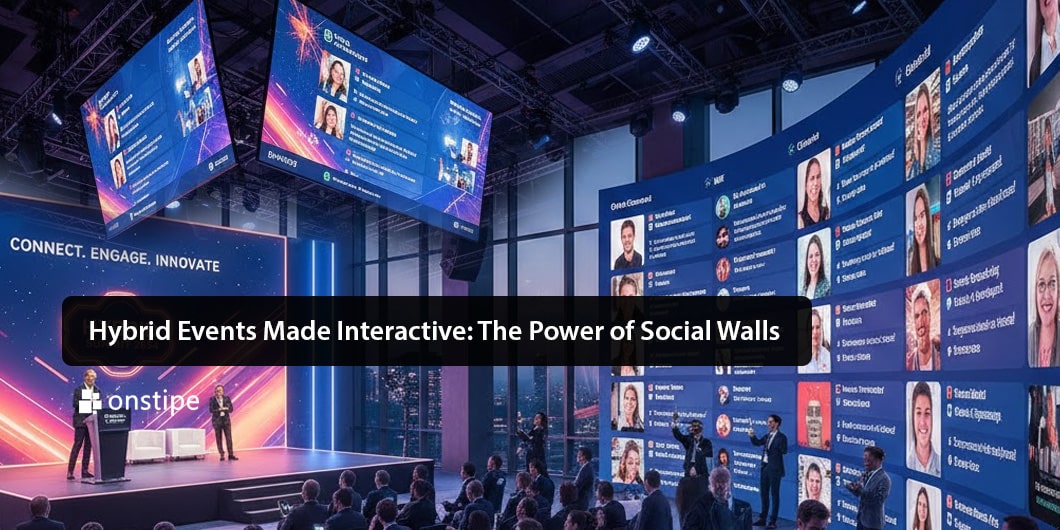If you’re organizing an event – whether it’s a conference, concert, webinar, or product launch – you need more than just a landing page or a social media post. You need a dedicated event website that brings everything together in one seamless experience.
An event website is more than just a logistical hub. Sure, it lets you manage registrations, share speaker details, post updates, and encourage social sharing all in one place. But more importantly, it creates a full digital experience that builds anticipation beforehand, keeps attendees engaged during the event, and helps maintain momentum long after it’s over.
In this article, we’ll break down how to build a website for an event that works, why it’s worth the effort, and what strategies will help you maximize its impact.
Why Is a Dedicated Event Website Essential?
Let’s start with the basics.
An event website is a standalone site or page built specifically to promote, manage, and support your event. Unlike a generic business page or event ticketing platform listing, it gives you complete control over how your event is presented online, from the visuals to the content to the calls to action.
Here’s why having a dedicated event site matters:
It Serves as the Central Hub
Every event has details like a date, a location, an agenda, a list of speakers, pricing tiers, and FAQs. If this information is scattered across multiple emails or social media posts, your audience is more likely to get confused or miss something important. A centralized event website keeps everything organized and easy to find. You control the narrative and the user experience, which leads to fewer drop-offs and more conversions.
It Simplifies Event Management
When you create an event website with built-in registration tools, you’re streamlining your operations. Attendees can sign up, get confirmation emails, choose sessions, and even pay – all without ever leaving your site. You can also integrate tools to track ticket sales, segment your audience, and collect valuable insights.
It Boosts Engagement and Credibility
A professionally designed website shows that your event is legitimate and worth attending. It can result in higher attendance rates and stronger engagement, especially when paired with email and social media campaigns.
Simply put: your audience expects a dedicated web presence. If they don’t find one, they might not take your event seriously.
It Helps with Promotion and SEO
Search engines will index your site to make it easier for people to discover your event organically. Optimize your content around specific keywords related to your event’s topic, location, keynote speakers, or the company hosting it.
For example, if you’re organizing a conference in Berlin on the topic of AI, you can post news items about the latest developments in AI, write full bios for your most well-known guest speakers, and even include a page with tourist tips for visiting Berlin. This can help attract an audience that is searching for this or related content.
You can also drive traffic to your site through blog posts, social sharing buttons, and media content on these topics.
Design Elements of a Memorable Event Website
Your website sets the tone for your event before anyone walks through the door. So the design should reflect your event’s purpose and create an experience that’s as engaging online as the event will be in person.
Remember that good design isn’t just about looking nice – it directly impacts how long visitors stay on your site, whether they register, and how strongly they anticipate your event.
Let’s go through the key design principles that make an event website memorable and effective.
1. Start with a Clean and Focused Layout
Clutter confuses people. All content on your event website should be easy to scan. Use a visual hierarchy that guides visitors to the details that matter most, including event details, registration, schedule, and speakers.
Start with a bold headline and subheadline explaining what the event is. Then, follow with the most pertinent information and a prominent registration button. For example, above the fold (the top of the homepage), you must include:
- The event name and logo
- Date and location (or “online” if it’s virtual)
- A short, compelling tagline or value statement
- A visible call-to-action button (“Register Now,” “Save Your Spot,” etc.)
Keep sections spaced out, use readable fonts, and don’t overload each page with too much content.
2. Use Intuitive Navigation
Your audience should never wonder where to click next. So make sure to structure your site so that users can find what they need quickly. A sticky navigation bar with clear and distinct menu items will make it easier for people to browse, especially on mobile. You can include entries like:
- About the Event
- Schedule or Agenda
- Speakers or Performers
- Registration
- FAQ
- Contact Info
Pro tip: Add anchor links on long pages, especially if you’re using a single-page design. It helps users jump to the various sections without scrolling endlessly.
3. Match Visuals with the Event’s Theme
Visual consistency not only strengthens your branding but also sets the tone for what attendees can expect. From colors, fonts, and images, every design element should reflect the spirit of the event.
For instance, if you’re hosting a creative arts festival, you should pick bold visuals and energetic colors. For a corporate summit, go with a more refined, modern style. The design should immediately communicate the vibe.
To bring your visual theme to life:
- Stick to a consistent color palette that reflects your event’s energy and brand.
- Use high-quality photos from past events or custom visuals that preview what’s to come.
- Limit fonts to two complementary styles – one for headings, one for body text – to keep the design clean and legible.
- Add video snippets or subtle animations to create a more immersive experience.
By doing this, your event site will not only look more polished but will also communicate its purpose and personality at a glance.
4. Make it Mobile-Friendly
Mobile optimization isn’t optional anymore – it’s critical for keeping users engaged. More than half of all web traffic comes from mobile devices, so your event website must be fully responsive. Buttons should be big enough to tap, forms should be easy to read and fill out, and content should load quickly on smaller screens.
Creating Content That Keeps Visitors Engaged
Once you’ve finalized the design, the next step is to add content that informs, excites, and converts.
What you say and how you say it can be the difference between a visitor bouncing and a visitor registering. So your content should answer important questions, build excitement, and guide users toward your event goals. Start by clearly explaining the essentials:
- What the event is about
- Who it’s for
- When and where it’s happening
This core information should be visible immediately, ideally at the top of the homepage.
Once visitors gain general knowledge of the event, they’ll want details. Introduce your lineup with speaker bios, including headshots and short introductions that highlight expertise or relevance. This adds instant credibility and demonstrates the value of attending.
Next, include an easy-to-scan agenda. Even a rough outline helps people understand how the event is structured and what they can expect to get from it. Break the day or days into sessions, and add a short description for each. Make it clear which sessions are keynotes, panels, or workshops.
To bring the event to life, add media that reinforces the experience, such as:
- Photos from previous events or venues
- Teaser videos featuring speakers or event highlights
Keep the tone of your site’s content aligned with the event’s identity – whether it’s formal, casual, creative, or technical. Every content block should serve a purpose.
And most importantly, add clear calls to action. Buttons like “Register Now,” “View Full Agenda,” or “Save Your Spot” should be placed logically on all pages to help users take the next step at any point.
Promoting Your Event Through the Website
Your event website is your main promotional tool. It brings everything together and gives people a single place to learn more, share the event, and sign up. Launch your site early, even while some content is still being finalized. The sooner it’s live, the sooner you can start building traffic.
To drive visibility and traffic:
- Share the website across all your marketing channels: social media, email campaigns, newsletters, and press releases.
- Add the event URL to speaker bios, sponsor pages, and partner sites.
- Use paid advertising or organic content to direct users to specific pages like your agenda or registration form.
Make your site easy to share by adding:
- Social media buttons on high-traffic pages
- Click-to-share links for announcements and speaker highlights
- Visual assets attendees can download and post on their own channels
Boost social engagement by embedding a live social feed that displays posts using your event hashtag. A real-time countdown widget on your homepage can also help generate urgency and excitement as the event approaches.
To strengthen your SEO, go beyond static pages. Create a blog or updates section where you can publish keyword-rich content. Focus on topics like:
- Speaker interviews or previews
- Behind-the-scenes insights
- “What to expect” guides
- Event FAQs
This type of content improves search visibility while keeping users engaged and informed.
Integrating Event Registration Into the Website
A seamless registration process can increase conversions significantly. Your event website should make signing up quick, easy, and secure.
Keep the registration process on your site whenever possible. Sending users to third-party platforms can reduce trust and lead to drop-offs unless the integration is well-designed and consistent with your branding.
Here are some best practices for registration:
- Keep forms short and mobile-friendly
- Only collect the information you need (e.g., name, email, ticket type)
- Include a progress bar if the form has multiple steps
- Add confirmation and thank-you pages to complete the experience
To make event management easier, choose a registration tool that allows:
- Real-time tracking of registrations
- Automatic confirmation emails and reminders
- Exportable attendee data for follow-ups or segmentation
- Drop-off tracking to improve conversion flow
Platforms like Eventbrite, Cvent, and RSVPify offer this functionality, and many CMS platforms (like WordPress) support plugins with similar features.
Maximizing Engagement During and After the Event
Your website’s job doesn’t end when the event begins. It can continue to serve as a live platform for updates and as a post-event content hub. Here’s how to keep the momentum going.
During the event:
- Live stream sessions directly on your site or embed streams from platforms like YouTube or Vimeo.
- Post real-time updates like announcing schedule changes, sharing shoutouts, or highlighting key moments.
- Add interactive features like live polls, Q&A forms, or a chat box to keep attendees engaged.
After the event:
- Upload session recordings, highlight videos, and photo galleries to recap the experience.
- Add a feedback form to understand what worked well and what could be improved.
- Promote your next event or link to related resources to keep visitors coming back.
- Encourage attendees to continue the conversation on social media by sharing highlights, tagging your account, or using your event hashtag like “Share your event highlights using #YourEvent2025.”
This post-event presence creates a sense of community and keeps your event on people’s minds even after it’s over.
Final Thoughts
An event website is a crucial part of making your event successful. It centralizes all essential information, streamlines registration, improves discoverability, and helps you connect with your audience before, during, and after the event.
Instead of managing scattered links and posts across different platforms, a dedicated site gives you one place to control the narrative, drive engagement, and track performance. It also makes your event look more professional and like it is worth attending.
If you want to launch quickly without building everything from scratch, using professionally designed event website templates can save time and ensure your site is optimized from the beginning. These come with all the fundamental sections built in, such as registration, an agenda, and speaker bios, and they are designed with mobile responsiveness, so you can focus on what matters: describing and delivering a great event.







